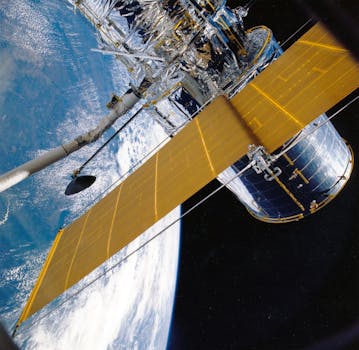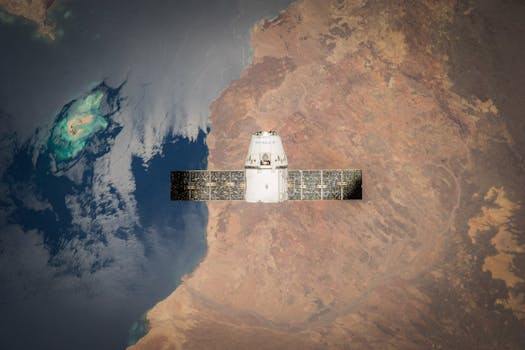
Orbiting Innovations: Key Updates in Satellite Telecommunications Technology
Satellite Telecommunications technology has been rapidly evolving, transforming the way we communicate and access information worldwide. With the increasing demand for global connectivity, satellite telecommunications have become a vital component of modern communication systems. In this article, we will delve into the latest innovations and updates in satellite telecommunications technology, exploring its current state, future prospects, and the impact it has on various industries.
Introduction to Satellite Telecommunications

Satellite telecommunications involve the use of artificial satellites orbiting the Earth to transmit and receive signals, facilitating communication between different locations. This technology has been in use for several decades, with the first commercial satellite, Intelsat 1, launched in 1965. Since then, satellite telecommunications have undergone significant transformations, driven by advancements in technology, decreasing costs, and increasing demand for global connectivity.
Satellite telecommunications offer several advantages, including global coverage, high-speed data transfer, and reliability. They play a crucial role in providing communication services to remote and underserved areas, where traditional infrastructure is limited or non-existent. Additionally, satellite telecommunications are used in various industries, such as maritime, aviation, and emergency response, where reliable and global communication is critical.
Current Advances in Satellite Telecommunications Technology

Recent years have witnessed significant advancements in satellite telecommunications technology, driven by innovations in areas such as satellite design, launch technology, and signal processing. Some of the key updates include the development of high-throughput satellites (HTS), which offer faster data transfer rates and greater capacity. HTS satellites use multiple spot beams to reuse frequencies, increasing the overall capacity and reducing the cost per bit.
Another significant advancement is the introduction of low-Earth orbit (LEO) satellites, which operate at altitudes of around 160-2,000 km. LEO satellites offer lower latency, higher speeds, and greater capacity compared to traditional geostationary satellites. Companies such as SpaceX, OneWeb, and Amazon’s Kuiper Systems are actively developing LEO satellite constellations, aiming to provide global broadband coverage and bridge the digital divide.
Furthermore, advancements in signal processing and modulation techniques have improved the efficiency and capacity of satellite communications. Techniques such as beam-hopping and frequency reuse enable more efficient use of available bandwidth, while advancements in coding and modulation schemes, such as LDPC and 5G NR, enhance the overall performance and reliability of satellite communications.
Future Prospects and Challenges

As satellite telecommunications technology continues to evolve, we can expect significant improvements in capacity, speed, and coverage. The development of next-generation satellite systems, such as Very High Throughput Satellites (VHTS) and Terabit satellites, will offer even faster data transfer rates and greater capacity. Additionally, the integration of satellite communications with emerging technologies, such as 5G, IoT, and artificial intelligence, will enable new applications and services, transforming various industries and aspects of our lives.
However, the growth of satellite telecommunications also poses several challenges, including regulatory issues, space debris, and cybersecurity concerns. The increasing number of satellites in orbit raises concerns about space debris and the potential for collisions, which could have catastrophic consequences. Moreover, the security of satellite communications is a growing concern, as hackers and malicious actors seek to exploit vulnerabilities in satellite systems.
To address these challenges, it is essential to establish clear regulations and standards for satellite telecommunications, ensuring the safe and responsible use of space. Additionally, the development of new technologies and techniques, such as autonomous systems and AI-powered security solutions, will be crucial in mitigating the risks associated with satellite communications.
Conclusion

In conclusion, satellite telecommunications technology has undergone significant transformations in recent years, driven by innovations in areas such as satellite design, launch technology, and signal processing. As the demand for global connectivity continues to grow, satellite telecommunications will play an increasingly important role in providing communication services to remote and underserved areas. While challenges such as regulatory issues, space debris, and cybersecurity concerns need to be addressed, the future prospects of satellite telecommunications are promising, with the potential to transform various industries and aspects of our lives.
See more:






